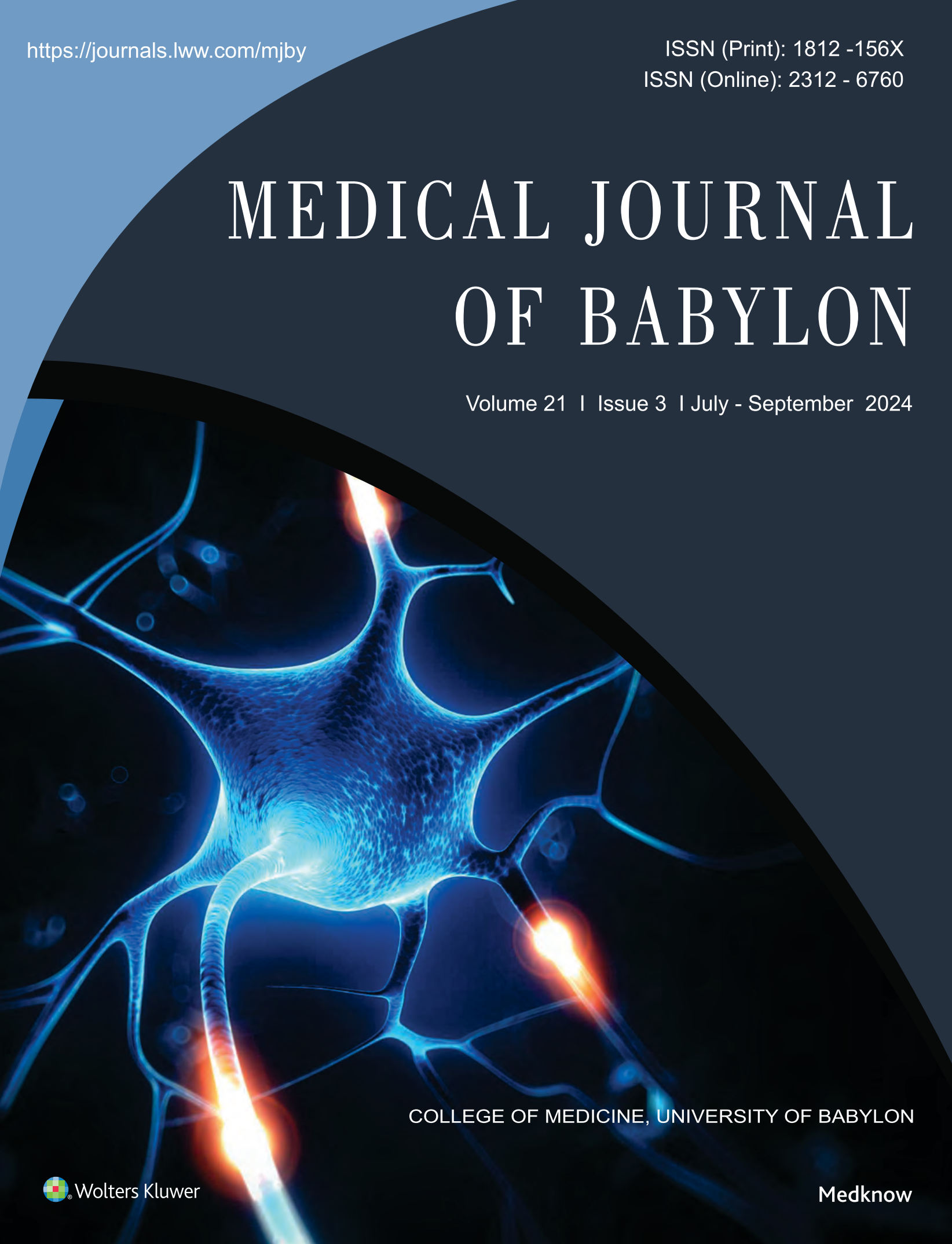Abstract
Background: Perforated peptic ulcer disease was rare in the 19th century but demonstrated a rise with the start of the 20th century. There had been a change in the treatment of perforated peptic ulcer disease from simple suturing to vagotomy and later to gastrectomy and finally the return to simple suturing combined with eradication treatment for H pylori. After the discovery of proton pump inhibitors (PPI), the incidence of peptic ulcer disease (PUD) seems to be decreasing but perforated peptic ulcer disease remains either stable or increased. The objective of the study was to identify risk factors for mortality and morbidity following the event of perforated PUD and ways to avoid them.
Methods: 34 patients with perforated duodenal ulcers in the emergency department of Al-Hilla Teaching Hospital who had been treated surgically by Graham patch followed by eradication treatment of H pylori between the 1st of March 2008 and the 5th of January 2012 had been studied prospectively recording intra and postoperative mortality and morbidity, history of smoking, non steroidal anti inflammatory analgesics (NSAIA), history of dyspepsia and the risk factors for the complications.
Results: Males constituted 21(61.7%) of our 34 patients. NSAIA and smoking were recorded in 12(35.3%) and 17(50%) of the patients respectively. 26 ( 76.4%) of the patients had been discovered to have duodenal ulcer (DU) for the 1st time with no previous history. 31(91.2%) of the patients had air under the diaphragm on chest x ray in standing position. 10(29.4 %) of the patients presented early to hospital ( within one day of abdominal pain ) while 21(61.8%) presented late and 3(8.8%) very late. Most of the patients recovered completely postoperatively without complications. 3(8.8%) had leaks from the repair and unfortunate death happened in only one (3%). 21(61.7%) had been referred from a general practitioner or another specialty of medicine before coming to the surgical department and a delay of more than 24 hours happened in 15 of these patients.
Conclusion: Perforated duodenal ulcer is a potentially-fatal disease that has to be dealt with abruptly once diagnosed. Care must be taken to prevent the complications especially in those who are elderly or have a comorbid illness as these are the people at risk. Delay in the diagnosis usually happens in the peripheral hospitals and by medical specializations other than surgery
Methods: 34 patients with perforated duodenal ulcers in the emergency department of Al-Hilla Teaching Hospital who had been treated surgically by Graham patch followed by eradication treatment of H pylori between the 1st of March 2008 and the 5th of January 2012 had been studied prospectively recording intra and postoperative mortality and morbidity, history of smoking, non steroidal anti inflammatory analgesics (NSAIA), history of dyspepsia and the risk factors for the complications.
Results: Males constituted 21(61.7%) of our 34 patients. NSAIA and smoking were recorded in 12(35.3%) and 17(50%) of the patients respectively. 26 ( 76.4%) of the patients had been discovered to have duodenal ulcer (DU) for the 1st time with no previous history. 31(91.2%) of the patients had air under the diaphragm on chest x ray in standing position. 10(29.4 %) of the patients presented early to hospital ( within one day of abdominal pain ) while 21(61.8%) presented late and 3(8.8%) very late. Most of the patients recovered completely postoperatively without complications. 3(8.8%) had leaks from the repair and unfortunate death happened in only one (3%). 21(61.7%) had been referred from a general practitioner or another specialty of medicine before coming to the surgical department and a delay of more than 24 hours happened in 15 of these patients.
Conclusion: Perforated duodenal ulcer is a potentially-fatal disease that has to be dealt with abruptly once diagnosed. Care must be taken to prevent the complications especially in those who are elderly or have a comorbid illness as these are the people at risk. Delay in the diagnosis usually happens in the peripheral hospitals and by medical specializations other than surgery
